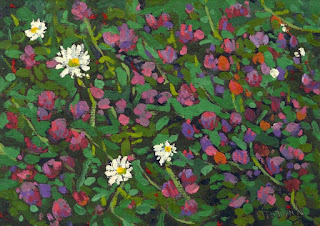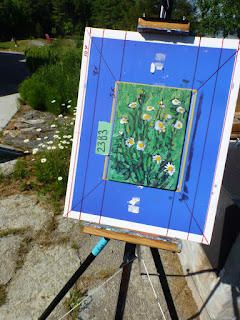A large cold low covered most of northeastern North America. Singleton Lake was on the western fringe. Multiple smaller vortices were orbiting their shared centre of mass like a multi-headed dumbbell. The air within this upper low was generally unstable. The most instability was located along the minor troughs extending from the vortices contained therein. Bands of showers spun around these vortices like spokes on a wheel. In this case there were multiple spinning wheels and together they comprised something more like a series of gears meshing together. The thunderstorms would explode where the gears connected to provide the deepest instability. The unstable air created at the ground by daytime heating of the surface would connect with the instability aloft. This would be a challenging forecast to get absolutely right. I recall many forecasters calling such a day and mix of sun and cloud with a chance of a passing shower or thunderstorm. Hmmm.
 |
| 2388 Meteorology Water Vapour-Enhanced Visible Radar- Surface Observations |
The water vapour showed circular cold areas which were the tops of the convection. These thunderstorms were scattered throughout the upper cold low. The convection was not random although it would take some detailed analysis and diagnosis to figure why each cell developed where and when it did.
The convective cells west of Singleton were closer to Trenton and all tilted to the southeast with the upper winds. I appreciated the beauty of the day and the meteorology.
For this and much more art, click on Pixels. Thank you.





































